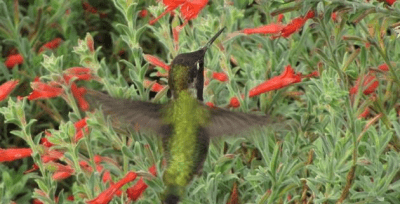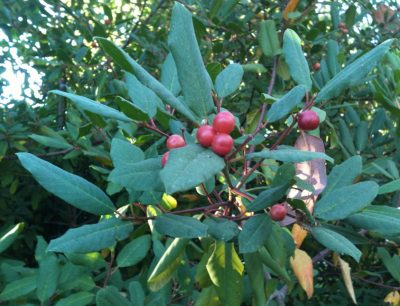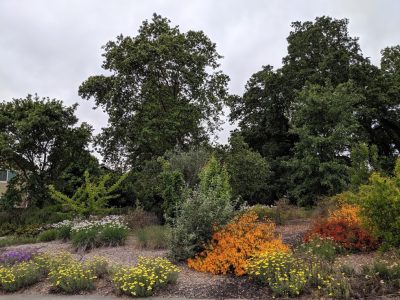How to Create a Water-wise Habitat Garden (pdf)
While many gardens can be designed around attracting particular kinds of insects or birds, it is also easy to plan and maintain your garden in a way that provides habitat and food year round for many and diverse migrating and stationary fauna. Be sure to consider the following when choosing plants and adapting practices to create a wildlife friendly garden.
What makes a flower attractive?
Pollen and nectar bring bees, butterflies and hummingbirds to the garden, because they are attracted to flowers that provide them with a food source. To provide a bountiful buffet that brings in the pollinators, plant selection for your garden should be based on the preferences of the bees and butterflies and take into consideration the time and duration that the flowers bloom.
Plant Native Species
While gardens can be a mix of native and non-native species, planting native species does have several advantages. Native species are adapted to the local climate and soil conditions, making them easier to care for in a landscaped setting. Having evolved with native fauna over the years, native plants typically have symbiotic relationships with them. Putting native plants in your garden will provide food and shelter for native animal species, promoting biodiversity. In other words, if you want to attract native species of butterflies, bees and birds the best way to do it is by planting native plants.
Create Groups of Color
Butterflies, bees and hummingbirds will be attracted to a garden by a large patch of bright flowers; patches should be planted closely together- this cuts down the distance the pollinators have to travel as they fly between flowers and makes the pollination process more efficient.
Use a variety of plant forms
Plant a garden with all types of plants: annuals, perennials, bushes, trees, herbs, vines and grasses. Choose plants that grow to different heights and forms, providing structure for habitat, those that form seeds and berries, are a variety of colors, shapes, sizes and blooming times. Different species have different preferences!
- Gardens with 10 or more species of nectar and host plants attract the largest number of bees and butterflies
- If you are looking for a particular butterfly, choose plants that provide food and shelter for larval development to encourage butterflies to stick around and lay their eggs in your garden
- By having plants blooming throughout the spring, fall and summer seasons you will provide a continual source of pollen and nectar to native species of butterflies, bees and other insects which will in turn provide food for birds.
- Shrubs and trees are important to have in a garden because they provide night roosting spots and habitat for perching, eating, nesting and breeding for birds.
Take advantage of the sunshine: Sun is essential for butterflies as they are cold blooded insects and need to start the day off by warming in the sun. Planting nectar plants, placing large rocks and exposing areas of soil in sunny spots throughout your yard will provide inviting habitat for butterflies. Planting trees and shrubs can also help by providing wind protection as long as they do not shade out the flowering plants.
Low maintenance is a good thing: fallen leaves can provide both natural mulch for your garden and hiding places for insects a well as egg laying surfaces for butterflies. Avoid removing old branches or logs from the garden as these can also provide important habitat for beneficial insects and decomposers.
Leave areas of uncovered soil: Native bees tend to be attracted to less manicured gardens. Most solitary native bees are ground dwellers and will use these open spaces to make nests. Open areas in a garden can also provide warming areas for the butterflies.
Avoid pesticides: A healthy garden needs bugs. Many pesticides are toxic to bees, butterflies and other pollinators. By planting native plants in your garden you are providing additional habitat for beneficial insects that can help control pest populations in your garden.
- Planting hedgerows of certain species that are know to attract beneficials such as Baccharispilularis or coyote bush- over 250 species of insects use this plant – and Ceanothus ssp. will provide you with a thriving community of insects as your garden’s first line of defense against species like aphids. For example, native ground beetles make their homes in native bunch grasses by day and hunt for slugs at night.
Avoid pruning during nesting season: many birds will not revisit their nests after human contact, leaving their newly laid eggs behind. Keep our bird populations healthy by avoiding any large removal of branches on shrubs and trees from March- August each year.





